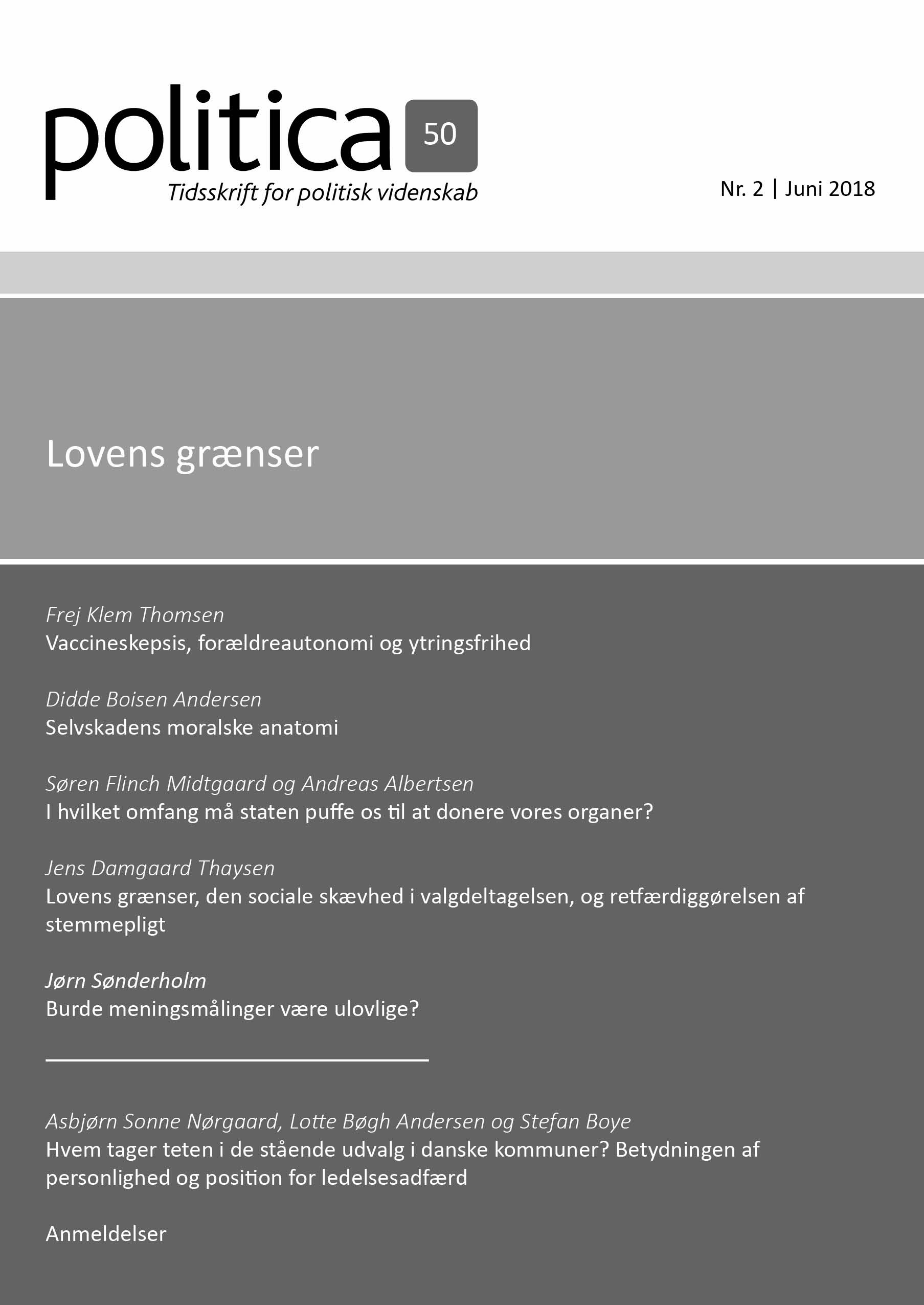The moral anatomy of self-harm
DOI:
https://doi.org/10.7146/politica.v50i2.131201Abstract
When a person cuts, burns or hits himself, we have a tendency to intuitively react with concern and an attitude that this kind of behavior should be stopped. But should it actually be stopped? For many people, self-harm is the least painful and most appropriate coping strategy to handle their situation, and it can therefore decrease their welfare if they are prevented from harming themselves. I argue that we should revise our intuitive reaction to this phenomenon, because the physical damage involved is not significant, and therefore this intuition does not seem justified. Although there seems to be something inherently wrong with harming yourself, this is not, all things considered, enough to substantiate intervention. It is important to underline that we should not neglect that the person who harms himself could be in need of help. However, the help should not consists of fighting the self-harming behavior but of focusing on the underlying problems behind the behavior.





